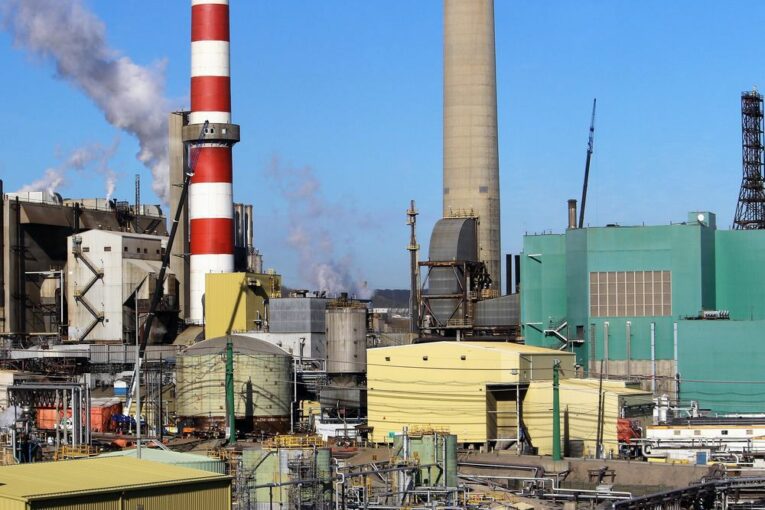
What does economic recovery look like in a post-pandemic world?
For countries around the planet, it looks like a significant bounceback in GDP growth this year from the punishing recession caused by COVID-19 — but the rebound is uneven and threatens to create haves and have-nots.
For the global oil and gas industry, it’s a sharp run-up in commodity prices, including an eye-popping spike in natural gas markets in Europe and Asia this month — even before cold weather arrives — along with a rise in oil markets.
At the annual Global Business Forum in Banff, corporate leaders delved Thursday into the theme of recovery: how quickly will it come, the potential pitfalls and what should we be watching for in the coming months.
“Clearly, there is a strong recovery going on in the U.S. and Europe and developing and emerging Asia, but it’s also a two-track recovery,” Jonathan Woetzel, a senior partner with management consultancy firm McKinsey & Co., said during a keynote address.
“There is a diverge here and this diverge is becoming a trend.”
The COVID-19 crisis triggered a sudden global recession last year as countries shut down their economies to slow the spread of the virus, but the road to recovery is underway.
The International Monetary Fund highlighted the issue in a recent report, but also warned that “fault lines” are widening in the recovery.
The IMF said access to vaccines was a principal fault line splitting the recovery into two camps: countries that can normalize economic activity later this year, and those that face resurgent infections — although it noted the recovery isn’t assured as the virus continues to spread.
It projected the global economy will grow by six per cent this year after a punishing 3.2 per cent contraction in 2020.
The U.S economy will expand by about seven per cent in 2021, Canada is pegged to grow by six per cent, while India’s GDP will increase by 9.5 per cent, the IMF forecast.
However, sub-Saharan Africa will rise by just 3.4 per cent and economies in the Middle East and Central Asia will only grow by four per cent, according to the July outlook.
Woetzel noted the recovery has been underpinned by the use of technology, with digitization, automation and the expansion in e-commerce playing a key role.
“A lot of that accomplishment simply came out of very few places. That inequality between those that could and all the rest has grown starker than ever,” he added.
“Most of that technology revolution is relatively concentrated. And our question is: Will it spread? Will we be able to see a broad-based recovery?”
For the energy sector, a recovery has been taking place throughout this year, faster than most analysts expected following the collapse in oil demand and prices in early 2020.
Benchmark oil prices closed Thursday up more than $1 to US$73.30 a barrel for West Texas Intermediate crude, while natural gas prices are soaring to record levels in Europe due, in part, to lower inventory levels.
(In the U.S., the natural gas contract closed at US$5.04 per mmBTU on the day.)
As Reuters reported this week, European gas prices have climbed by more than 250 per cent this year, prompting energy-intensive businesses including steel and fertilizer producers to cut or halt output.
“We have seen with the rebound that demand is pretty strong and, in fact, when you look at global markets today, they are tight,” Daniel Yergin, vice-chair of energy consultancy IHS Markit and noted energy author, told the forum.
The world has suddenly shifted from having ample supplies of oil and gas to a period of more constraint as the economy has changed gears, he added.
In an interview, Yergin said the focus of many politicians has recently been on climate targets and getting to net-zero emissions by 2050, but escalating heating bills for consumers could quickly make energy a short-term pocketbook issue.
“What is happening in Europe right now is really rattling the politicians and the policy community,” he said.
“You have to not only worry about 2030 and 2050 (climate targets), but worry about 2021 and the winter in 2022. And that has put energy security and reliability back on the agenda.”
As decarbonization and the energy transition gains momentum, industry experts say governments also need to pay close attention to the effect of higher prices on consumers and the broader economy.
“What it does tell us is that we cannot switch immediately overnight to a renewable future. The evidence is right in front of us right now,” Shell Canada country chair Susannah Pierce said on the sidelines of the forum.
“That’s the piece of this puzzle that we cannot lose. We do want to have a lower carbon future and we must. But we also need to do so in a way that consumers are also not jeopardizing their lives and their livelihoods.”
For former Suncor Energy CEO Steve Williams, commodity prices are the key to the Canadian oilpatch’s recovery and he sees stronger days ahead as less investment by the industry is beginning to have an effect.
“We are at the front end of that recovery,” Williams said in an interview.
“Particularly in Europe at the moment, I am surprised that they are surprised prices are going up. What else do they expect to happen? So I see more of these surprise shocks coming.”
Chris Varcoe is a Calgary Herald columnist.
You can read more of the news on source
